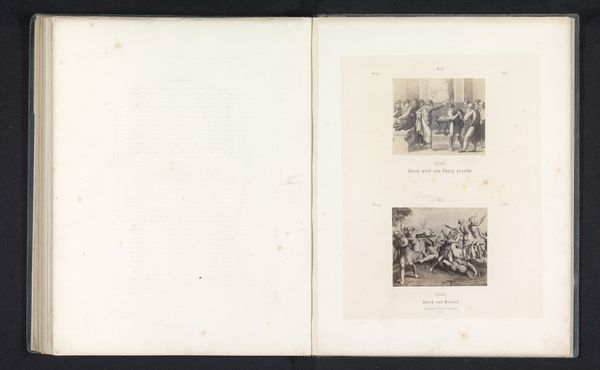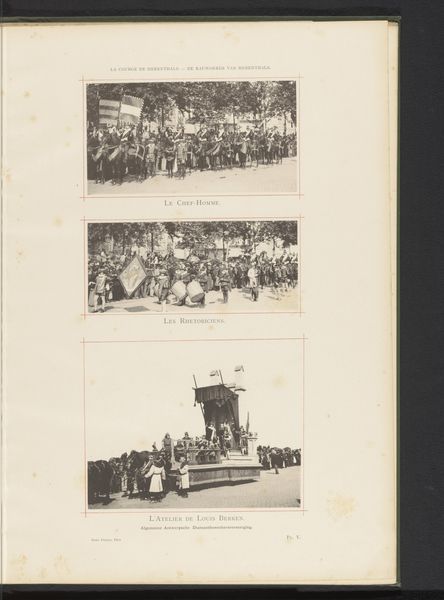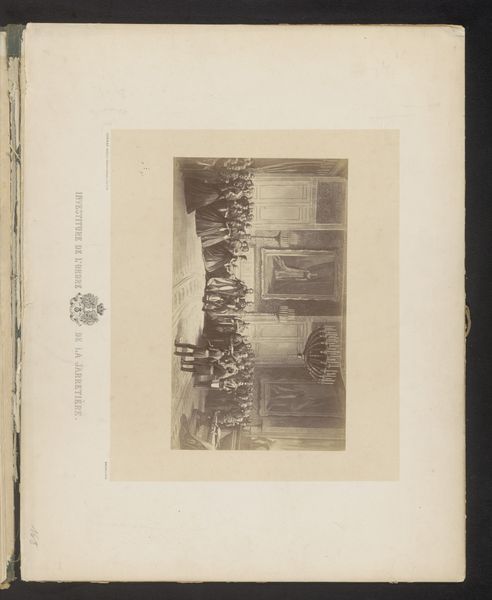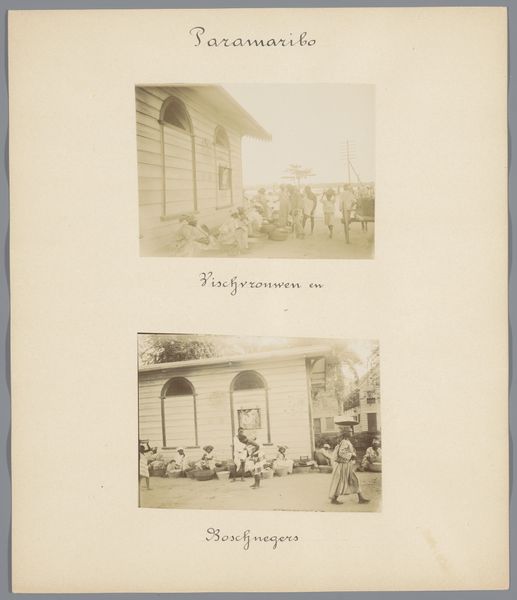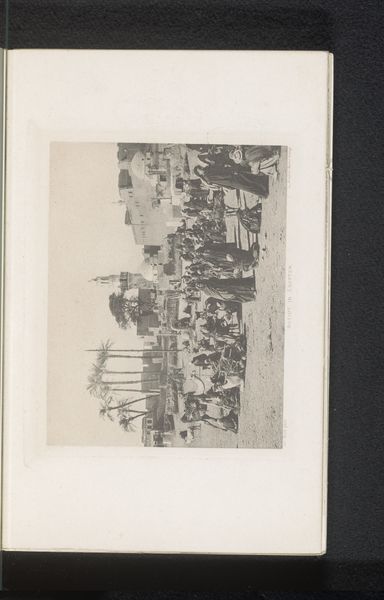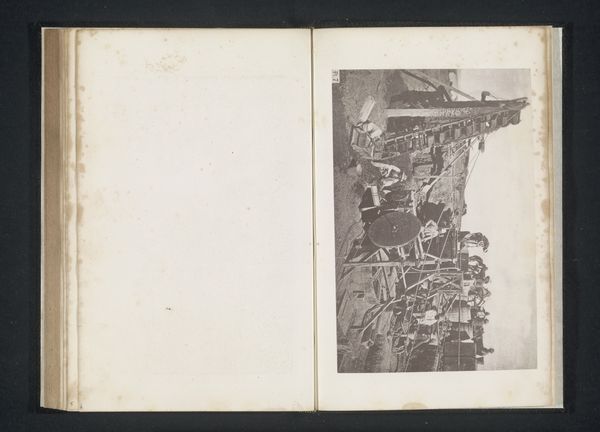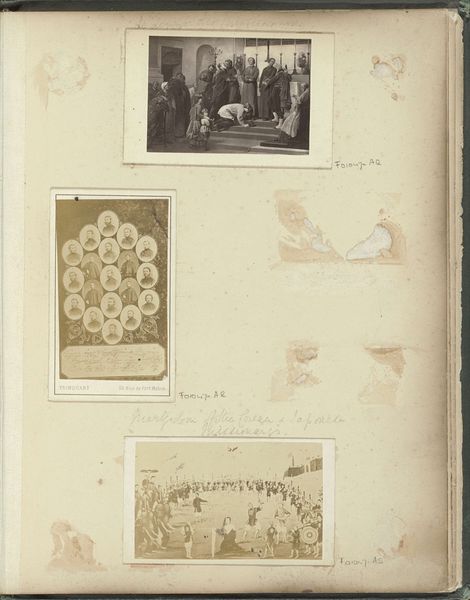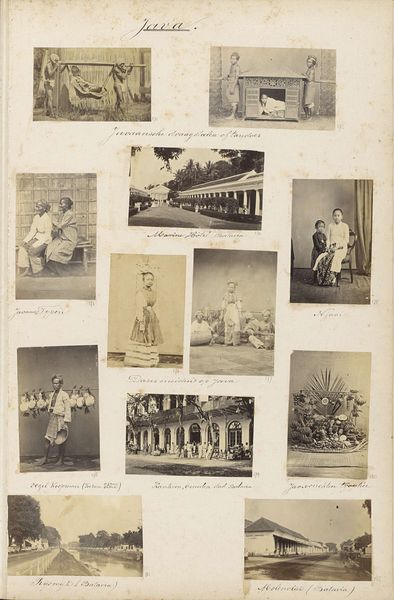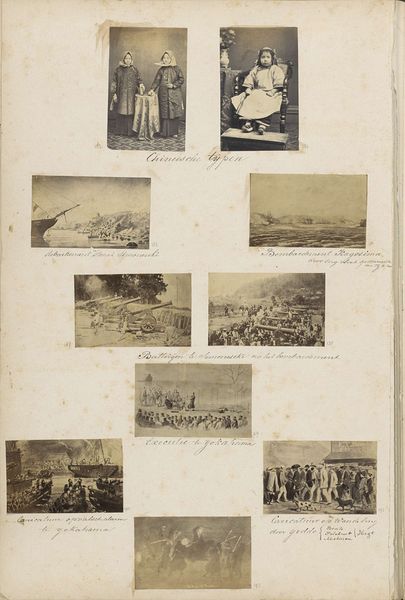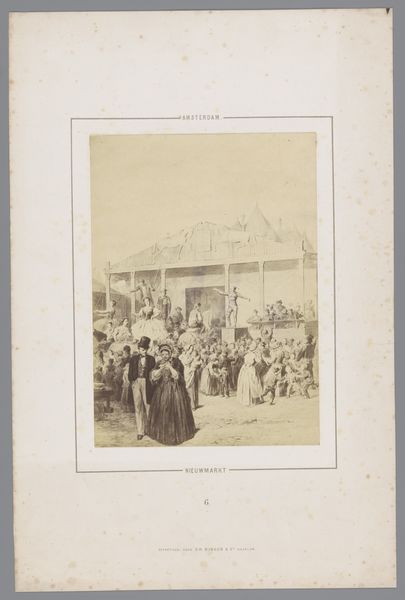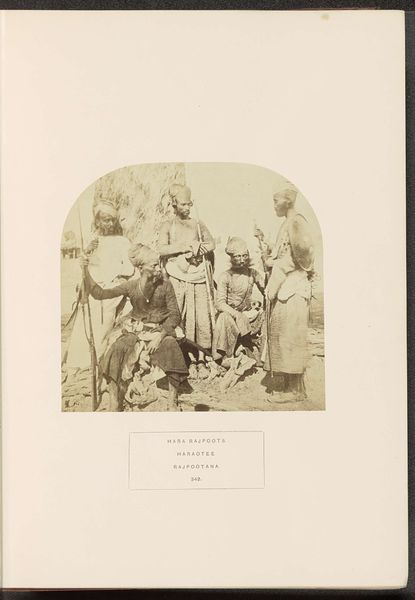
photography, albumen-print
#
portrait
#
landscape
#
photography
#
genre-painting
#
albumen-print
Dimensions: height 83 mm, width 81 mm
Copyright: Rijks Museum: Open Domain
Curator: Here we have a fascinating page from an old photograph album, likely dating to 1898, that includes an albumen print entitled "Portret van drie Urker vrouwen in klederdracht"– "Portrait of Three Urk Women in Traditional Costume." Editor: My first thought? Somber. There's a seriousness to this photographic tableau, a solemn quality to the women that seems to seep right out of the sepia tones. Curator: Yes, the formality is palpable. Note how their placement—standing shoulder to shoulder in the image—reinforces a sense of communal identity. The costume itself becomes almost sculptural here, defining form and social belonging. Editor: Exactly! And the albumen process! Look how it gives an almost dreamy luminosity to their starched white aprons, contrasting starkly with the dark, weighty fabric of their dresses. There's a play of light and shadow that underscores the textural richness of their garments. Are they heavy with the salt and wind of the sea? Curator: I like how you’re zeroing in on those textural contrasts. It’s worth remembering that clothing in this era served as a potent marker of regional identity. For these women of Urk, an island community, it would speak to both tradition and practicality. Editor: But the emotional content is far from absent! Just look at their eyes; they tell a story, don't they? Or is it that I am projecting stories of toil and insularity? There is, still, something undeniably evocative in their unwavering gaze, in their quiet resistance to the photographic lens. Curator: Interesting point. It could be both, a meeting of lived experience and our interpretive lenses. Their gazes are very direct—and that tension adds to the piece's power. The gaze locks with our gaze through history. I wonder who they were and what their daily lives were like? Editor: It truly highlights how photographs, especially ones like these, serve as potent visual documents, capturing both the material culture and—hopefully!—the less tangible elements of a time and place long since gone. Curator: Indeed. I feel like spending a bit of time simply noticing how much the formal photographic process invites meditation, whether we are speaking of tone, light, line, or affect. The photo is quite affecting, in my opinion. Editor: Agreed. An encounter like this challenges and refines the way we understand visual records and social artifacts; it gives room for interpretation and for a feeling of reverence for the photographic, aesthetic image.
Comments
No comments
Be the first to comment and join the conversation on the ultimate creative platform.

